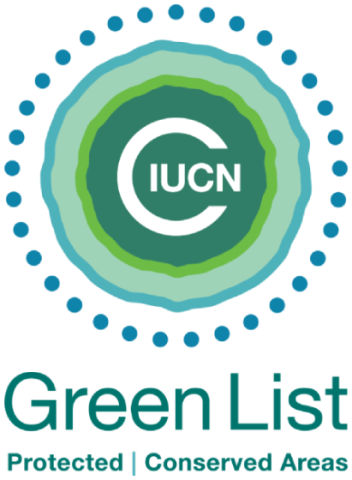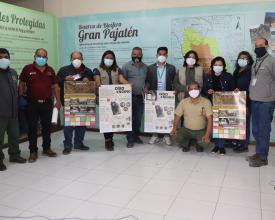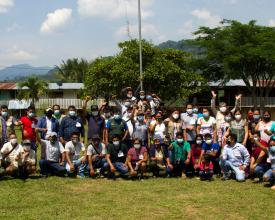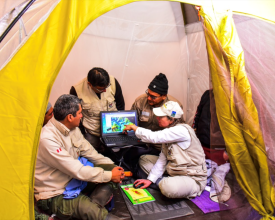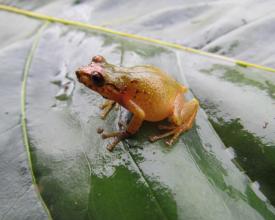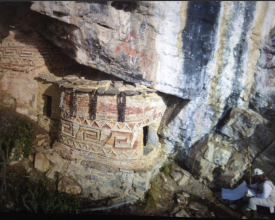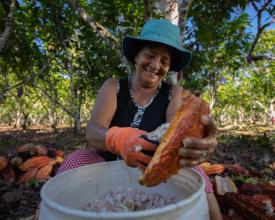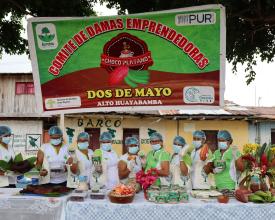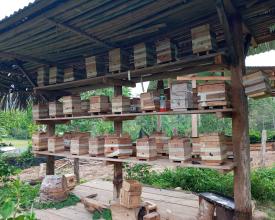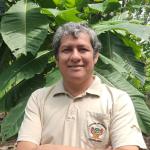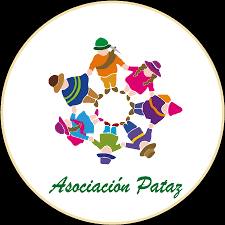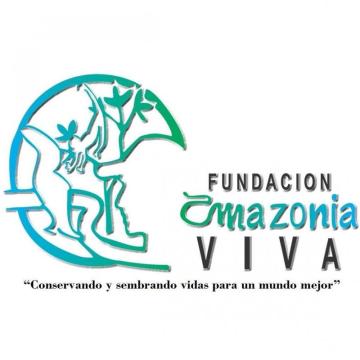
An Integrated Management Approach for the Abiseo River National Park to strengthen the management of the Gran Pajaten Biosphere Reserve.
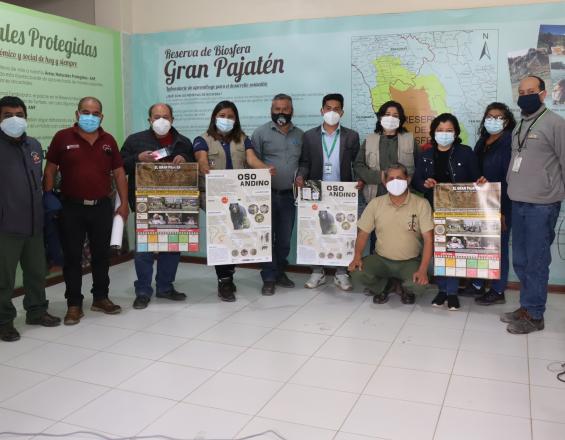
In 2016, the Gran Pajatén Biosphere Reserve (RBGP) was recognized with 2'509,698.84 Ha, of which more than one million is under conservation modalities. The core zone is the Abiseo River National Park (PNRA). It has great biodiversity, endemism and covers four terrestrial ecoregions of high regional priority: Marañón Dry Forest, Peruvian Yunga, Paramo de la Cordillera Central and Ucayali Rainforest. It is a mixed natural and cultural World Heritage site.
The management of the PNRA and the RBGP is the result of a joint effort between the public and private sectors and local associations, who contribute with research, promotion of regional and local conservation modalities, and sustainable economic activities. This has generated a territorial space with alternatives for the sustainable economic development of the reserve's populations.
Context
Challenges addressed
- The PNRA and the RBGP have a large territorial scope covering the Andes and the Amazon over three departments of Peru, where stakeholders have diverse interests in the territory and its resources.
- The mixed natural and cultural heritage character adds complexity to management actions.
- There is a high level of endemism and biological and cultural diversity, preserved by the difficult geography. This also becomes a challenge for research and threat monitoring.
- Management of the impacts of mining activities, promoting their legality and the application of good environmental practices.
Location
Process
Summary of the process
For the management of the RBGP, especially its Core Zone, which corresponds to the PNRA, an integrated territorial management model was established, involving landscape stakeholders. It is based on a common vision of conservation and organized resource use, promoting different conservation modalities to mitigate threats in the Buffer and Core Zones of the RBGP (Block 1).
Since research is the main focus of the PNRA's management, institutional partners are invited to contribute technically and financially to prioritized research on biological diversity and cultural heritage, which consolidate the NPA's management. In addition, authorities and communities are invited to participate in research expeditions, which strengthens their identity and knowledge of the values of the PNRA and RBGP (Block 2).
Within the PNRA and RBGP, conservation modalities, sustainable economic activities and REDD+ projects are promoted. One planned strategy is to align the productive activities prioritized by the management of the PNRA with the Development Plans of the San Martin, Amazonas and La Libertad regions to mitigate potential threats to the PNRA and RBGP (Block 3).
Building Blocks
Participatory landscape conservation
The PNRA is the Core Zone of the Gran Pajatén Biosphere Reserve. For its conservation, the PNRA is building a participatory landscape management model that promotes conservation modalities in its Buffer Zone and associated landscape, which are located in the reserve's Buffer Zone. Thus, the Boshumi RCA was created and works in coordination with 25 rural communities and at least 19 adjacent productive associations.
Enabling factors
Because it is a mixed heritage site, SERNANP and the Ministry of Culture lead the management of the PNRA with an integrated vision. In addition, local governments, Amazonian and Andean farming communities, and scientists are willing to strengthen the management of surveillance and control, biological monitoring, sustainable resource management, and the benefit of the ecosystem services provided by the PNRA in its Buffer Zone (ZA). The private sector assumes its responsibility with good environmental practices and research.
Lesson learned
The effective management and safeguarding of World Heritage is consolidated through the participation of public and private institutions, rural communities and organizations surrounding the PNRA in the protection and sustainable use of resources and the benefit of the Gran Pajaten Biosphere Reserve's ecosystem services.
One result of the management is the recognition of forest governance through the Rio Huayabamba Abiseo Model Forest (Havana 2015) and through the REDD+ Project "Sacred Martin Biocorridor".
Research for the safeguarding of natural and cultural heritage
Research is one of the main pillars of PNRA's management. The rediscovery of the yellow-tailed choro monkey(Lagothrix flavicauda) was the basis for its establishment and the discovery of archeological sites such as Gran Pajatén and Los Pinchudos allowed the park to be declared a National and World Heritage Site. The actors involved in the management of the PNRA participate in and finance research that the park prioritizes and that contribute to the knowledge of the RBGP's values.
Enabling factors
There is leadership from the PNRA in identifying priority research for natural and cultural values and promoting the participation of allied institutions. On the other hand, there is a willingness on the part of NGOs and companies within the scope of the PNRA to support these initiatives technically and financially.
Lesson learned
The PNRA is the first PNA to use LIDAR technology to corroborate the state of conservation of the forest and archeological sites. In addition, with the participation of the Ministry of Culture, 12 archeological sites were registered in Peru's Archeological Geographic Information System. The results of the research strengthen the identity of local stakeholders living in the area.
Contribution to local and regional development
In the ARPA and the associated landscape of the PNRA, which are located within the Buffer Zone of the RBGP, the population works in agriculture, tourism and gold mining that operates legally. The management of the PNRA has promoted sustainable economic activities in this area based on local resources such as organic cocoa, beekeeping and fish farming, and REDD+ projects that revalue natural ecosystems, with the participation of men's and women's organizations.
Enabling factors
Public institutions, campesino communities, authorities, NGOs and companies working within the PNRA have shown their willingness to participate in the management of the PNRA and the RBGP. A crucial element has been the willingness of the campesino communities to organize and assume ownership of concessions for conservation and ecotourism. As well as the willingness of regional and local governments to develop sustainable development projects and the support of NGOs for such initiatives and REDD+ projects.
Lesson learned
The participation of the local population and the articulation with different public entities, organizations and private companies, represented in the PNRA's Management Committee, allowed the construction of local development spaces, with the improvement in the production of agricultural products such as potatoes and cocoa, the mining activity operating with environmental and social responsibility standards and the REDD+ projects that value ecosystem services, providing benefits to the population.
Impacts
- The Gran Pajatén Biosphere Reserve has promoted its own brand, which has added value to agricultural and agroforestry products that are promoted as environmentally friendly production chains.
- Local communities have become model experiences of entrepreneurship, which they share through internships and visits from other localities with the participation of men's and women's organizations.
- It allows the sharing of scientific knowledge generated by research in the core zone and buffer zone, such as REDD+ projects.
- It allows the governance of the territory in a public-private model for the economic, social and cultural development of the Amazon.
- Strengthens the Andean-Amazonian identity of the highland and jungle populations, as well as the conjunction of the Chachapoyas culture in the Yungas and Punas of the Reserve.
- Strengthens landscape development, mitigating illegal logging and other illegal activities.
Beneficiaries
PNRA staff and approximately 1,500 people in the area: ACR Boshumi, 25 rural communities and 19 associations that are involved and benefit from the management. In addition, 3 regional governments, the NGOs AMPA, Fundavi and Pataz, and 5 legal mining companies.
Sustainable Development Goals
Story
Being from a family of Amazonian origin and an anthropologist by profession, I always wanted to learn about the traditions of the Amazon. The opportunity to interact with the people in the field motivated me to work in the PNRA. In 2003 I started working as a volunteer park ranger, since 2005 I was responsible for the Huicungo Interpretation Center and in 2010 I became an Environmental Education Specialist. Later I took on the challenge of being Chief of the PNRA, a position that brings me new learning and the satisfaction of interacting and contributing to the Andean-Amazonian communities.
Around the PNRA there are actors from the private sector that act at different scales. On the one hand, local communities have assumed conservation concessions, contributing to the conservation of the RBGP. The private sector is also involved in gold mining activities, which contribute to the management of the RBGP, even beyond their strictly legal responsibilities.
Since 2010 I have been able to work in cooperation with stakeholders. With the private sector we established annual agreements prioritizing environmental education, park ranger training and support for the volunteer park ranger program. To date, SERNANP has an inter-institutional cooperation agreement with Compañía Minera Poderosa SA and the Pataz Association. To date, this cooperation relationship has allowed us to develop research with LIDAR technology, together with the Ministry of Culture, as well as publish the research with the book "Parque Nacional Río Abiseo, memoria viva del paisaje andino amazónico" (Abiseo River National Park, living memory of the Andean Amazonian landscape).
The results of this participatory management made it possible for Abiseo to be recognized as part of the Rio Huayabamba Abiseo Model Forest (2015) and Gran Pajaten Biosphere Reserve (2016), complementary to its recognition by UNESCO as a Natural and Cultural World Heritage Site (Mixed World Heritage).

